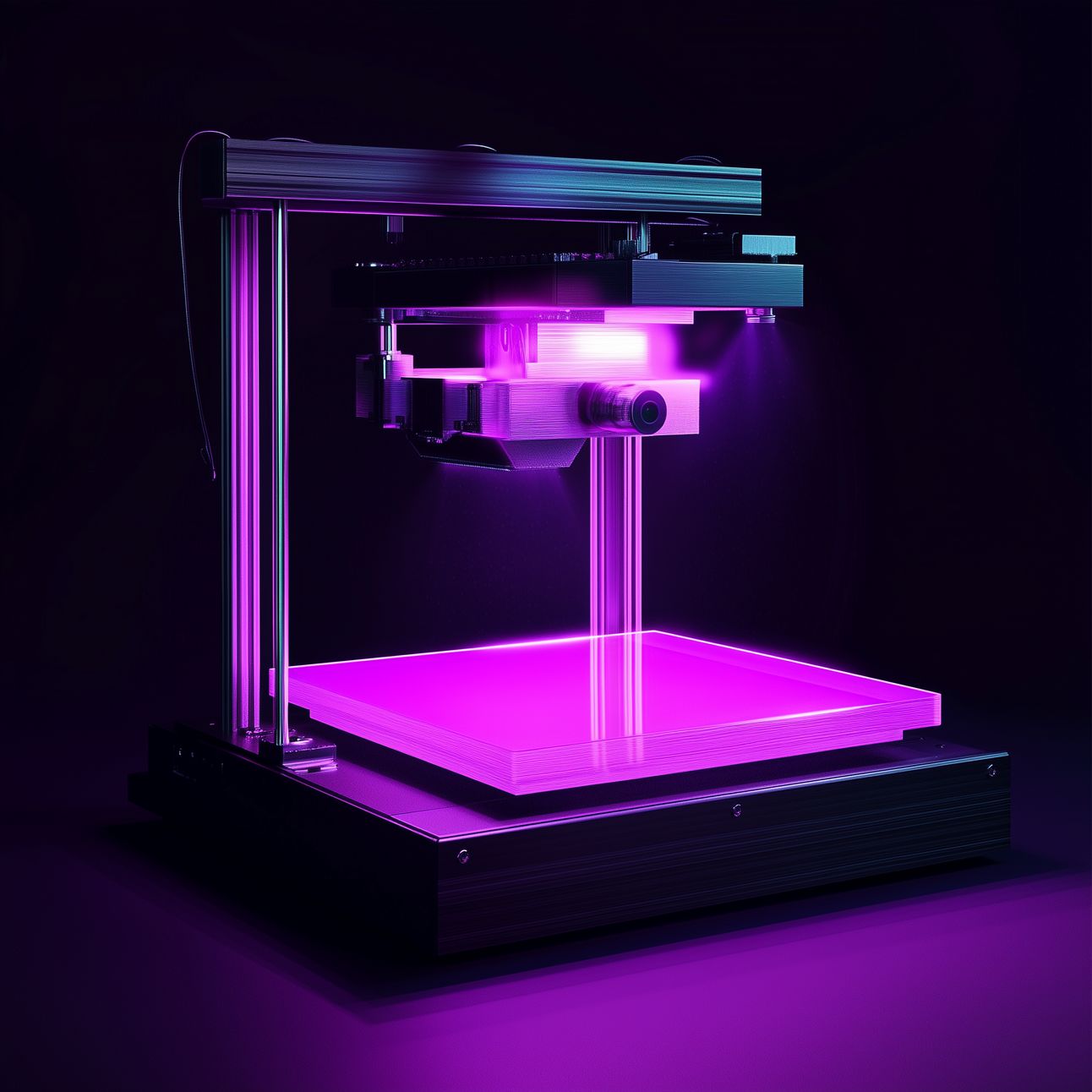- The Daily Qubit
- Posts
- The Daily Qubit
The Daily Qubit
QNLP is especially designed for effective text classification on NISQ devices, NASA's classical pre-optimization approach improves quantum simulations, QML for process monitoring in additive manufacturing detects anomalies in real time, and more.

Welcome to The Daily Qubit!
Get the latest in top quantum news and research Monday through Friday, summarized for quick reading so you stay informed without missing a qubit.
Have questions, feedback, or ideas? Fill out the survey at the end of the issue or email me directly at [email protected].
And remember—friends don’t let friends miss out on the quantum era. If you enjoy The Daily Qubit, pass it along to others who’d appreciate it too.
Happy reading and onward!
Cierra
Today’s issue includes:
A quantum natural language processing technique enables effective text classification on NISQ devices.
A classical pre-optimization approach to the ADAPT-VQE algorithm improves quantum simulations for chemical applications by reducing the workload on quantum hardware.
Quantum machine learning is used for process monitoring in additive manufacturing to monitor manufacturing states and detect anomalies in real time.
QUANTUM APPLICATION HEADLINES

Image: by Midjourney for The Daily Qubit
APPLICATION: LEXIQL is a quantum natural language processing technique designed by researchers from Northeastern University and IIT-BHU. It enables effective text classification on NISQ devices and is specifically designed for performing NLP tasks on error-prone quantum computers.
SIGNIFICANCE: As quantum computing and QNLP continue to evolve, using these for NLP tasks such as text classification on noisy quantum devices presents both a challenge and an opportunity. Existing methods often fall short with real-world, complex datasets or require impractically large qubit resources, which are currently out of our reach. LEXIQL presents a solution by using noise-aware methods, such as incremental data injection and diverse quantum circuit ensembles, which make it resilient to quantum noise and more practical for use on current quantum hardware.
HOW: LEXIQL utilizes a three-pronged approach: incremental data injection, encode-inject-process (EIP) cells, and diverse quantum circuit ensemble. More qualitatively, this means that rather than injecting all data at once, LEXIQL introduces text data progressively, reducing information loss and interference. The EIP cells enable data compression within quantum circuits, injecting data iteratively and using processing layers to manage state-data interference. And multiple learner models are combined with varying circuit depths and configurations to balance accuracy and resilience to noise.
BY THE NUMBERS:
87% – Average accuracy achieved on five different datasets, including both real and synthetic, under ideal simulation conditions.
79% – Average accuracy under noise conditions on IBM's Hanoi quantum computer.
5 datasets – Evaluated datasets, including real-world and synthetic data, used to test LEXIQL’s robustness.

Image: by Midjourney for The Daily Qubit
APPLICATION: A collaboration between NASA Ames, Virginia Tech, and Argonne National Laboratory introduces a classical pre-optimization approach to the ADAPT-VQE algorithm, designed to improve quantum simulations for chemical applications. By leaning into classical high-performance computing resources, this helps reduce the workload on quantum hardware in order to run more complex simulations on current noisy devices.
SIGNIFICANCE: Quantum simulations for chemical systems are constrained by the limited qubits and coherence times of NISQ devices, often hindering complex calculations. This pre-optimization method uses a sparse wavefunction circuit solver to optimize computational demands before the quantum step. This could help advance quantum advantage in chemistry by optimizing electronic structures for larger molecules which would further support development of applications in drug discovery and materials science.
HOW: The ADAPT-VQE algorithm grows the ansatz step-by-step by selecting operations that reduce the electronic energy, guided by energy gradients. At each step, the sparse wavefunction circuit solver truncates the wavefunction and retains only the most relevant determinants in order to lower computational costs. To further push for efficiency, researchers pre-optimize the quantum ansatz on a classical supercomputer by fine-tuning SWCS settings, achieving high accuracy before using the solution on quantum hardware in order to conserve quantum resources.
BY THE NUMBERS:
52 spin-orbitals – Simulated molecular systems equivalent to this qubit count, pushing NISQ devices’ capabilities.
10 molecules – The method was tested on small molecules, achieving near-exact energies relative to full configuration interaction calculations.
3 steps – Core SWCS strategy: classical ansatz optimization, determinant truncation, and selective energy gradient calculations.

Image: by Midjourney for The Daily Qubit
APPLICATION: Researchers from Georgia Institute of Technology have designed a framework that incorporates quantum machine learning for process monitoring in additive manufacturing—the process of creating objects by building up material layer by layer, commonly known as 3D printing. Their strategy uses a quantum support vector machine and quantum convolutional neural network to monitor manufacturing states and detect anomalies in real time.
SIGNIFICANCE: Additive manufacturing processes can generate complex, high-dimensional data that often suffers from limited and imbalanced dataset making real-time monitoring challenging. Quantum machine learning, with its reduced parameter requirements and exponential data encoding efficiency may be able to improve anomaly detection and quality assurance in manufacturing.
HOW: The proposed quantum machine learning framework integrates QSVM and QCNN. QSVM maps classical data into high-dimensional quantum space using a quantum kernel, which then classifies different machine states, such as normal, blocked, and semi-blocked. QCNN detects LPBF spatters—laser powder bed fusion spatters, which are particles of molten or partially melted material that eject from the laser interaction zone—potentially affecting print quality. This happens in real-time using optical images by compressing image data into quantum states through a series of quantum convolution and pooling layers to reduce parameter requirements.
BY THE NUMBERS:
85.7% to 89.5% – Classification accuracy of QSVM, outperforming the 84% - 86.7% of classical support vector machine models.
63 – Number of parameters required for QCNN, compared to over 1,300 needed for similar accuracy in classical neural networks.
4 states – Machine states (Normal, Run-out-of-Material, Semi-Blocked, Blocked) monitored for FFF processes using QSVM.
1st-of-its-kind – This is the first study to apply quantum machine learning for monitoring additive manufacturing processes.
Tackle your credit card debt by paying 0% interest until 2026
If you have outstanding credit card debt, getting a new 0% intro APR credit card could help ease the pressure while you pay down your balances. Our credit card experts identified top credit cards that are perfect for anyone looking to pay down debt and not add to it! Click through to see what all the hype is about.
RESEARCH HIGHLIGHTS
⚛️ A study from IonQ, the University of Maryland, and Tata Consultancy Services demonstrates an efficient quantum simulation approach for the Fermi-Hubbard model using trapped-ion hardware. Through co-design strategies, including optimized gradient-descent methods and entropy-based gate reduction, the team was able to achieve a 35% reduction in two-qubit gate counts, effectively demonstrating the value of hardware-aware design in quantum simulation capabilities for complex systems like the Fermi-Hubbard model on noisy devices.
💡 Researchers from the University of Oxford and the University of Cambridge investigate the robustness of quantum chaos in open quantum circuits, focusing on how dissipation affects relaxation dynamics. Researchers analytically compute the dissipative form factor in a Floquet random phase model, finding that, under certain conditions, chaos can improve relaxation in open quantum systems, suggesting that weak dissipation allows for a sustained chaotic "ramp" before an eventual relaxation.
💎 Scientists from the University of Science and Technology of China introduce a deep neural network-based approach to improve magnetic field acquisition using nitrogen-vacancy centers in diamonds for quantum sensing. The model, Magnetic Field Calculation Network (MFCN), translates resonance frequency data from NV centers into magnetic field vectors with sub-nanotesla accuracy and provides more precise and efficient quantum sensing for applications requiring high accuracy and large dynamic range.
NEWS QUICK BYTES
❌ University of Sydney researchers Dominic Williamson and Nouédyn Baspin have developed a 3D quantum error correction architecture that uses fewer qubits for error suppression. By significantly reducing physical qubit requirements, they drive forward the possibility of a compact and reliable "quantum hard drive" that can support scalable quantum computing, essential for applications like cryptography and quantum simulations.
💸 Ericsson, in partnership with the Canadian government, is expanding its investment in Canadian R&D with a CAD $630 million boost (approximately $453 million), focusing heavily on next-generation technologies like quantum communication, AI-driven network management, Cloud RAN, 5G Advanced, and 6G. This funding will also support Ericsson's quantum research capabilities at its Quantum Research Hub in Montreal, with the intent to advance both hardware and software for quantum communications and computing.
✨ RIKEN, NTT, and Fixstars Amplify announced they have developed the world’s first general-purpose optical quantum computer, accessible via cloud, designed to support large-scale quantum calculations. Operating near room temperature with high-speed processing up to several hundred terahertz, it uses time-division multiplexing and quantum teleportation to perform multi-step operations efficiently.
🔒️ Singtel is enhancing its quantum-safe network PQC and QKD from Palo Alto Networks and Fortinet to secure enterprises against future quantum cyber threats. Palo Alto Networks will implement a PQC IPSec VPN for secure data transmission using new post-quantum encryption standards, while Fortinet will provide quantum-resistant software, hardware encryptors, and advanced platforms.
🖥️ SDT and SemiQon have signed an MOU to develop a modular quantum computing system that integrates SemiQon’s silicon-based QPUs with SDT’s precision measurement technology. The use of SemiQon's scalable silicon-based QPU technology will support reduced production costs, enhance compatibility with existing semiconductor manufacturing, and expedite quantum computing commercialization.
🤝 The Quantum Algorithms Institute, AbaQus, and InvestDEFY Technologies have partnered to apply D-Wave's quantum annealing systems for enhancing machine learning in financial forecasting and predictive analytics. Through trial runs, they have successfully used quantum computing to streamline feature selection, overcoming challenges such as non-stationary data and model overfitting, and optimizing data points for more efficient and accurate financial predictions. According to the partnership, they have seen improved feature subset selection and reduced computational time.
QUANTUM MEDIA
LISTEN
In Episode 3 of the Quantum Foundations Podcast, host Maria Violaris sits down with Dr. Sam Kuypers as he discusses his research on the many-worlds interpretation of quantum mechanics, exploring its implications for quantum theory, probability, and philosophical questions about reality.
WATCH
Citi’s Sophia Bantanidis hosted Terra Quantum leaders Markus Pflitsch and Vishal Shete to discuss how quantum cryptography can enhance the security of cross-border payments:
THAT’S A WRAP.
How many qubits was today's newsletter? |



